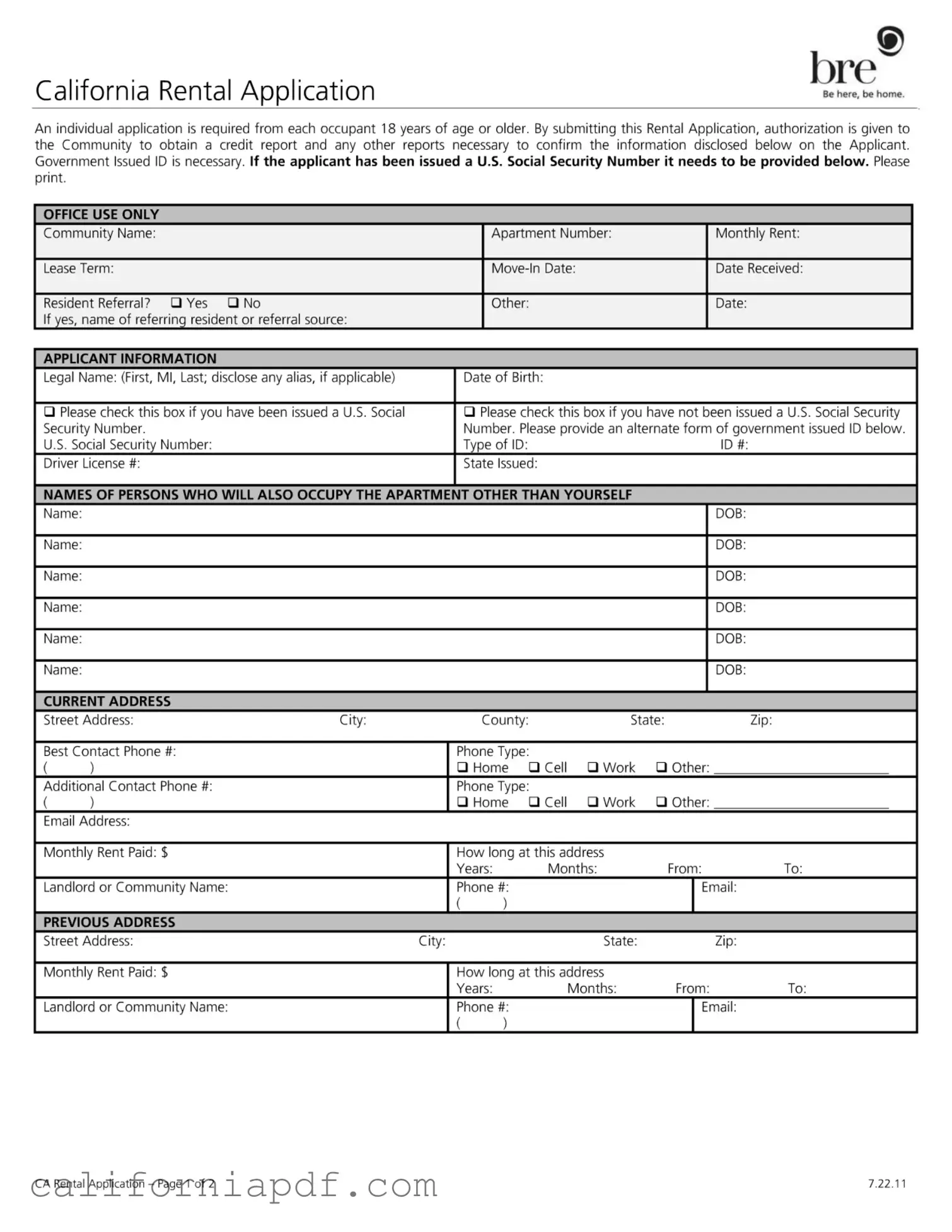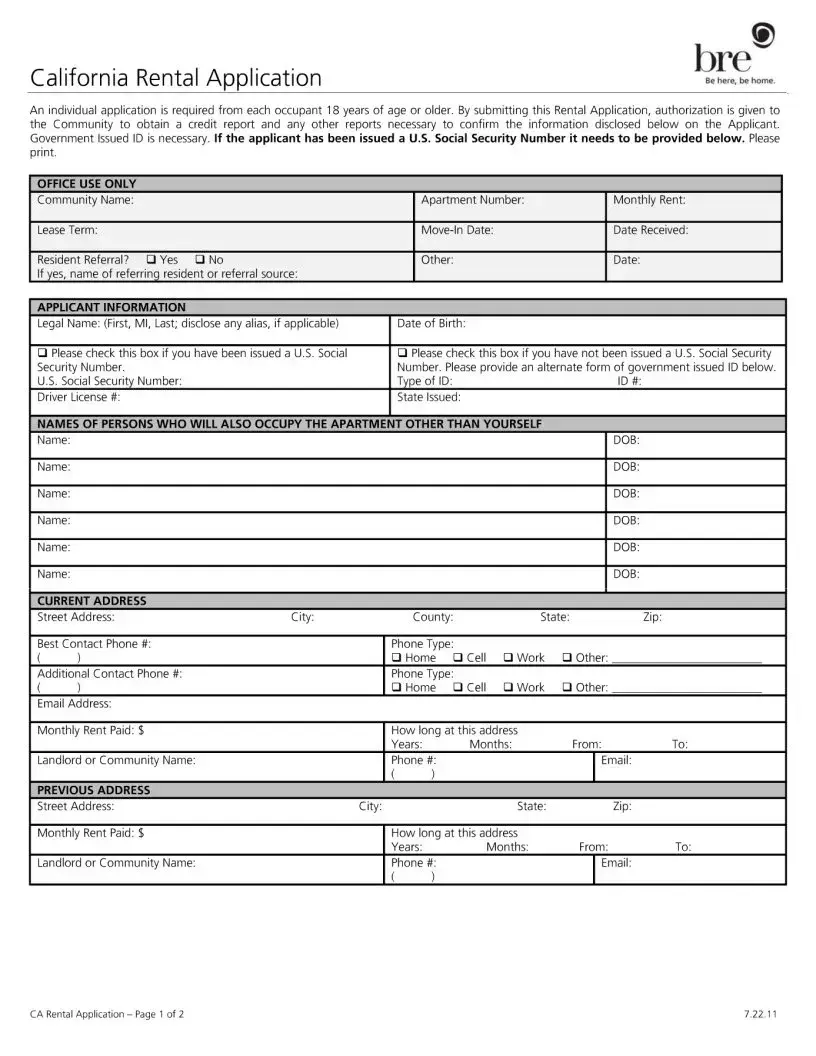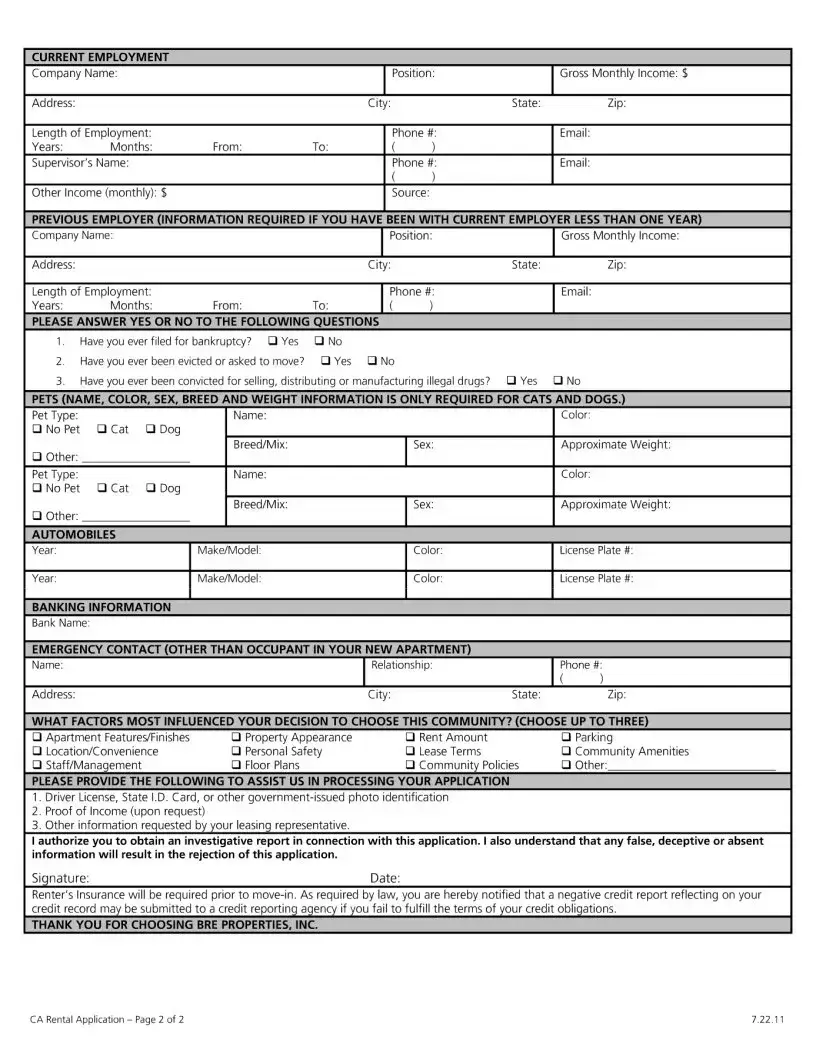The California Rental Application form shares similarities with the Residential Lease Agreement. While the Rental Application is primarily used by landlords to gather information from potential tenants as part of the screening process, the Residential Lease Agreement is the finalized contract that officially outlines the terms under which the tenant will rent the property from the landlord. Both documents are integral in the rental process, with the application serving as the preliminary step leading to the drafting and signing of the lease agreement, which specifies rent, deposit amounts, lease duration, and other important terms.
Another document akin to the California Rental Application form is the Tenant Screening Form. This form also collects detailed personal, financial, and employment information from prospective tenants but places a stronger emphasis on background checks, including credit, rental history, and sometimes criminal records. Like the rental application, it's designed to help landlords assess the risk and suitability of applicants. The main difference lies in the depth of the screening process, with the Tenant Screening Form being more thorough in its investigative aspects.
The Co-signer Agreement bears resemblance to the California Rental Application form as well. It comes into play when a potential tenant may not meet the financial requirements on their own and a co-signer is needed to provide additional security for the landlord. The inclusion of a co-signer agreement alongside a rental application underscores the landlord’s effort to mitigate financial risks. Both documents work together to ensure the landlord has a comprehensive view of the financial reliability of all parties involved in the leasing agreement.Also related is the Property Management Agreement, which outlines the relationship between a property owner and the property manager or management company responsible for overseeing the rental. While different in purpose, both this agreement and the rental application form are foundational to the rental process, ensuring that all parties understand their roles, responsibilities, and the expectations placed upon them. The Property Management Agreement, much like the Rental Application, requires detailed information to ensure the successful operation of the rental property.
The Lease Renewal Agreement shares similarities with the California Rental Application form in the sense that it addresses the terms under which the tenancy will continue past its original term. Instead of initiating a new tenant-landlord relationship, this agreement extends an existing one, often under the same or slightly modified terms. While both documents signify an agreement between the tenant and landlord, the Lease Renewal Agreement circumvents the need for a new rental application by basing its continuation on the tenant's past performance and existing information.
Similarly, the Notice to Vacate is another document related to the rental application process. While it serves as a declaration from either the tenant intending to leave the property or the landlord indicating the end of the lease, it's a document that comes into play based on the information and terms agreed upon during the initial application and leasing phase. This notice ensures both parties are aware of the intent to end the tenancy, highlighting the need for clear communication and understanding initially established in the rental application.
The Rent Increase Notice can be seen as complementary to the California Rental Application form. While the application gathers tenant data for a landlord to make an informed decision, a Rent Increase Notice is used to inform tenants of changes to the terms, specifically regarding the rent amount, during or after the lease period. Both require a strategic approach to communication between the landlord and tenant, ensuring that changes or agreements are clearly documented and agreed upon.
Lastly, the Emergency Contact Form, though not strictly a legal document in the rental application process, shares the application's aim of collecting critical information for future use. In the context of tenancy, knowing who to contact in an emergency is invaluable for both parties' safety and peace of mind. The rental application's collection of personal details and references has a parallel purpose to the Emergency Contact Form in ensuring responsible management and response in various situations.


